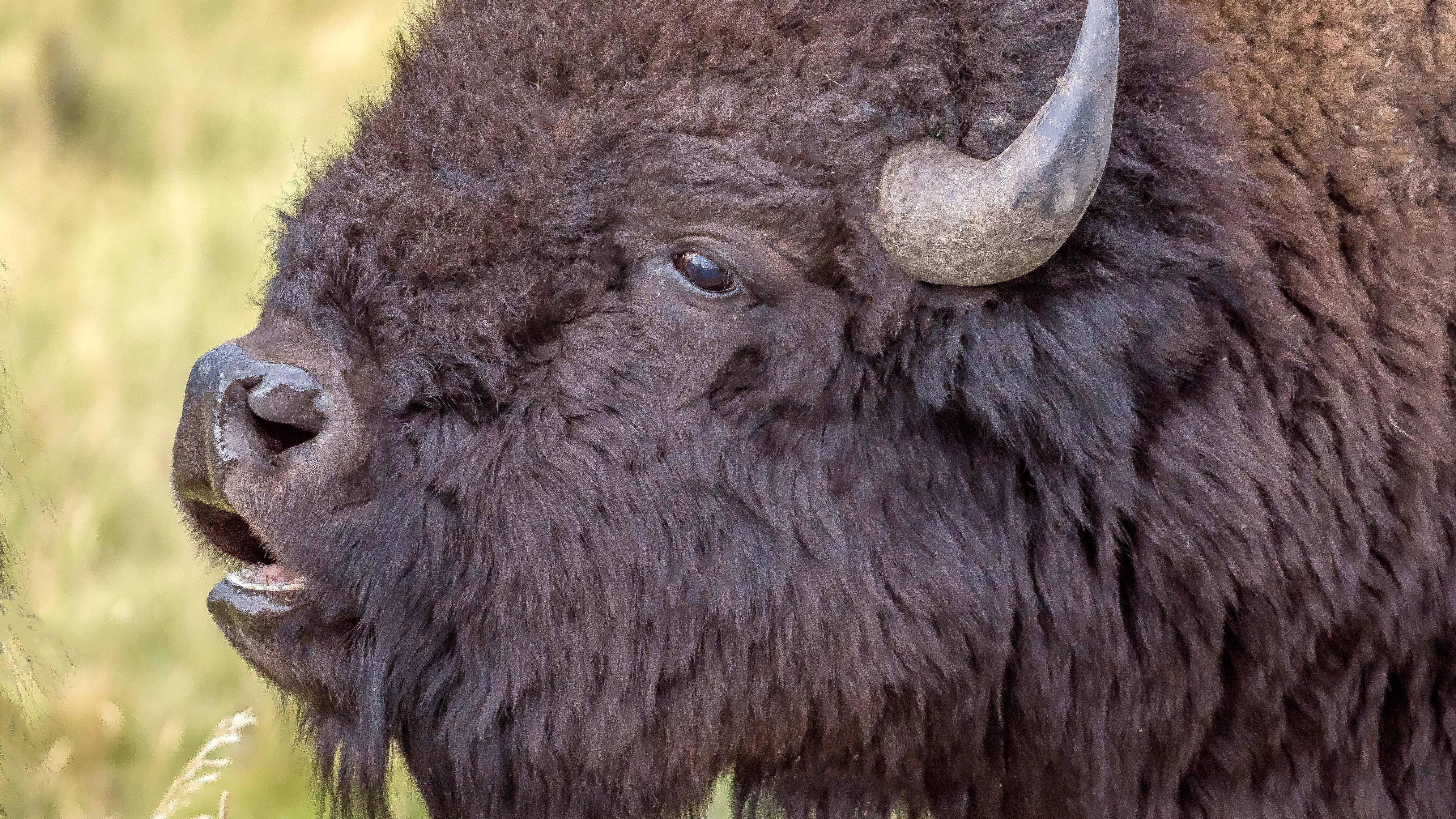
The eerie bellowing of a bison is one of the most characteristic sounds of fall at Yellowstone National Park, and if you've never heard it before, you're in for a treat. Wyoming-based wildlife photographer Julia Cook has captured a remarkable video of a lone bull bellowing to assert dominance in an otherwise silent landscape, and shared it online so you can hear the deep, resonating call for yourself.
As the National Park Service (NPS) explains, these bellows can be hard across Yellowstone from early June, when mating activities start. Mature bulls will also engage in wallowing to display aggression and assert dominance, rolling on the ground so vigorously the whole herd and become obscured by dust.
The position of a bull's tail can also tell you a lot about his mating status and behavior. This male's tail is lowered, but a tail held high like a question mark is a sign of a threat or challenge.
A post shared by Julia Cook (@julia.littlelightningnature)
A photo posted by on
Once a bull has found a receptive female, he will keep all other males away with bellowing, wallowing, and threat displays such as bluff charges.
"Bulls can lose almost 200 pounds or 12% of their body weight during the rut," adds the NPS. "This is because tending females and breeding activities take time away from normal grazing."
Bison safety
Cook captured her video from the safety of a vehicle, and the NPS advises that this is the best way to enjoy watching wildlife at National Parks.
Like all wild animals, bison can be unpredictable, and although they may seem calm at first, their behavior can change in an instant if they feel threatened. In fact, they are responsible for more injuries at Yellowstone than any other animal, including bears, wolves and snakes, and two women were gored at US National Parks this summer after getting too close.
All the latest inspiration, tips and guides to help you plan your next Advnture!
"Always stay at least 100 yards (91 m) away from bears and wolves, and at least 25 yards (23 m) away from all other animals, including bison and elk," says the NPS. If you're not sure how far that is, you can get a rough idea by closing one eye, holding out an arm, and giving the animal a thumbs-up. If you can hide it completely behind your thumb, you're at a safe distance.
For more advice, take a look at our guides how to avoid being gored by a bison and wildlife safety: eight tips for unexpected encounters. If you're planning a trip to a National Park to see the rut this fall, you might also be interested in our list of six tips from a wildlife photographer, which will help you capture the moment like a pro.
- The best hiking boots: our top picks for exploring National Parks

Cat is the editor of Advnture, She’s been a journalist for 15 years, and was fitness and wellbeing editor on TechRadar before joining the Advnture team in 2022. She’s a UK Athletics qualified run leader, and in her spare time enjoys nothing more than lacing up her shoes and hitting the roads and trails (the muddier, the better), usually wearing at least two sports watches.
